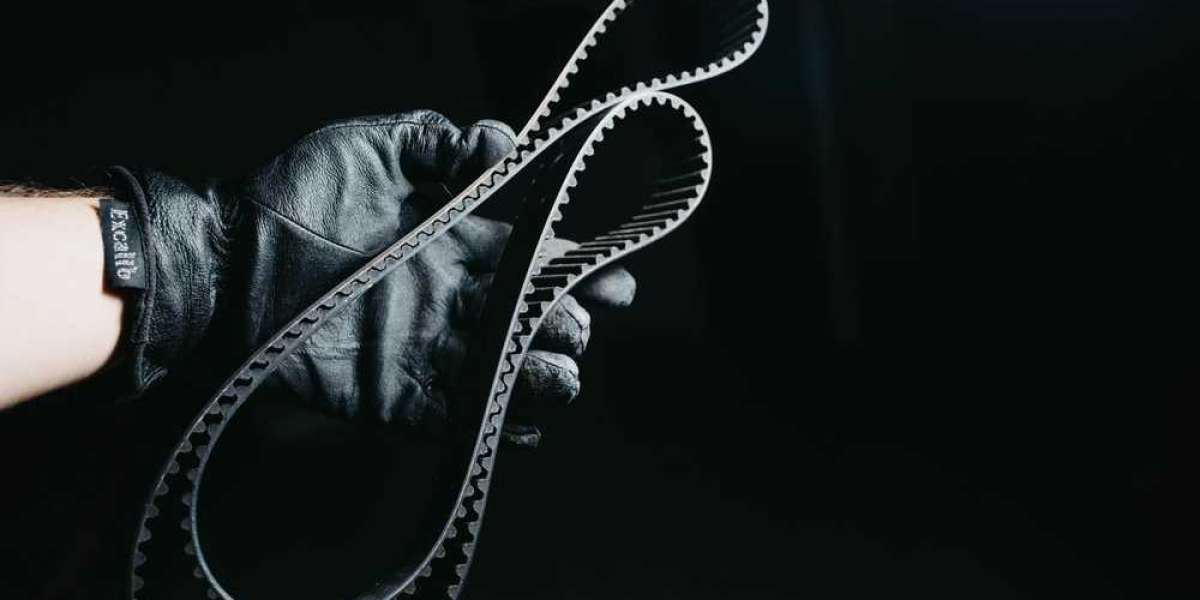A car timing belt plays a critical role in the operation of an engine, ensuring that key components are properly synchronized. This belt, usually made of durable rubber, connects the crankshaft and camshaft(s), ensuring that the engine's valves open and close at the correct times during each cylinder’s intake and exhaust strokes. Without the timing belt, an engine would not function efficiently, and its components would not work in harmony.
What is a Timing Belt?
The timing belt is a vital component that keeps the engine’s internal components in sync. It is responsible for driving the camshaft(s), which control the opening and closing of the engine’s intake and exhaust valves. The timing belt also synchronizes the crankshaft and camshaft rotation, ensuring precise valve timing. As a result, the timing belt helps the engine maintain efficient performance, reduce wear and tear, and prevent serious damage.
Why is the Timing Belt Important?
- Engine Synchronization: The timing belt ensures the precise movement of the camshaft and crankshaft, which is critical for the engine's smooth operation. Without synchronization, the engine cannot produce power efficiently.
- Preventing Engine Damage: A broken timing belt can cause catastrophic engine damage. If the timing belt fails, the pistons may collide with the valves, potentially causing significant damage to the engine’s components, leading to costly repairs.
- Ensuring Optimal Engine Performance: A well-maintained timing belt ensures that your engine operates at its best, with improved fuel efficiency, power output, and smoother operation.
Signs of a Worn-Out Timing Belt
- Engine Misfires or Rough Idling: If the timing belt is worn or loose, it can lead to engine misfires or rough idling.
- Engine Failure to Start: A worn-out or broken timing belt may prevent the engine from starting, as the components are no longer synchronized.
- Unusual Noises: If you hear a ticking or slapping noise coming from the engine, it could indicate that the timing belt is worn, loose, or damaged.
- Oil Leaks: Oil leakage from the timing belt cover is another sign of potential timing belt issues.
When Should You Replace Your Timing Belt?
Most car manufacturers recommend replacing the timing belt at regular intervals, typically between 60,000 to 100,000 miles (96,000 to 160,000 kilometers), depending on the vehicle make and model. However, this can vary, so always refer to the owner’s manual or consult with a mechanic for guidance on your specific vehicle.
It’s important to note that some vehicles may have timing chains instead of timing belts, which generally require less frequent maintenance. Timing chains, however, still need to be inspected periodically for wear.
How to Replace a Timing Belt
Replacing a timing belt is a complex and labor-intensive process that requires technical expertise. It’s recommended to have this done by a professional mechanic. The process typically involves:
- Removing the necessary components to access the timing belt, such as the engine covers and accessories.
- Ensuring that the crankshaft and camshaft are in the correct position before removing the old belt.
- Installing the new timing belt and ensuring proper tension before reassembling the engine.
- Conducting tests to ensure the engine is running smoothly.
Preventative Maintenance Tips
- Regular Inspections: Have your timing belt checked regularly for signs of wear or damage during routine car maintenance.
- Follow Manufacturer Recommendations: Adhere to the manufacturer’s recommended timing belt replacement schedule to prevent unexpected failure.
- Listen for Odd Noises: Pay attention to any unusual engine noises, as they may be early signs of a timing belt issue.
Conclusion
The car timing belt is a critical component in ensuring your engine runs smoothly and efficiently. Regular maintenance and timely replacement of the timing belt are essential to prevent engine damage and avoid costly repairs. Keeping an eye on signs of wear and following your vehicle’s maintenance schedule can help ensure that your engine performs at its best for many years.








